Created on 8/21/2024
Vietnam is home to 54 distinct ethnic groups, among which 53 are considered ethnic minorities. A significant number of these groups have long-standing traditions of brocade weaving. Each brocade fabric is a testament not only to its high aesthetic quality but also to the history and culture of the nation or country in which it was created.
The Ethnicity Project emerged with the goal of learning, safeguarding, and disseminating the value of brocade patterns to a broader audience, especially young people. Established in 2018, Ethnicity is a collective of eight members whose goal is to join hands in preserving the brocade patterns of Vietnam's ethnic minorities. Despite their youth, the organization has garnered the support of numerous volunteers and has traveled extensively throughout various provinces in Vietnam to delve into the culture and distinct brocade patterns of 13 ethnic groups, such as K’ho (Lâm Đồng), Mạ (Đồng Nai), Chăm (Ninh Thuận), Mường (Thanh Hoá), Pà Thẻn (Hà Giang), Cơ Tu (Quảng Nam), Bana, Gia Rai, Giẻ Triêng, Rơ Măm, Hrê, Xơ Đăng, Brâu (Kontum).
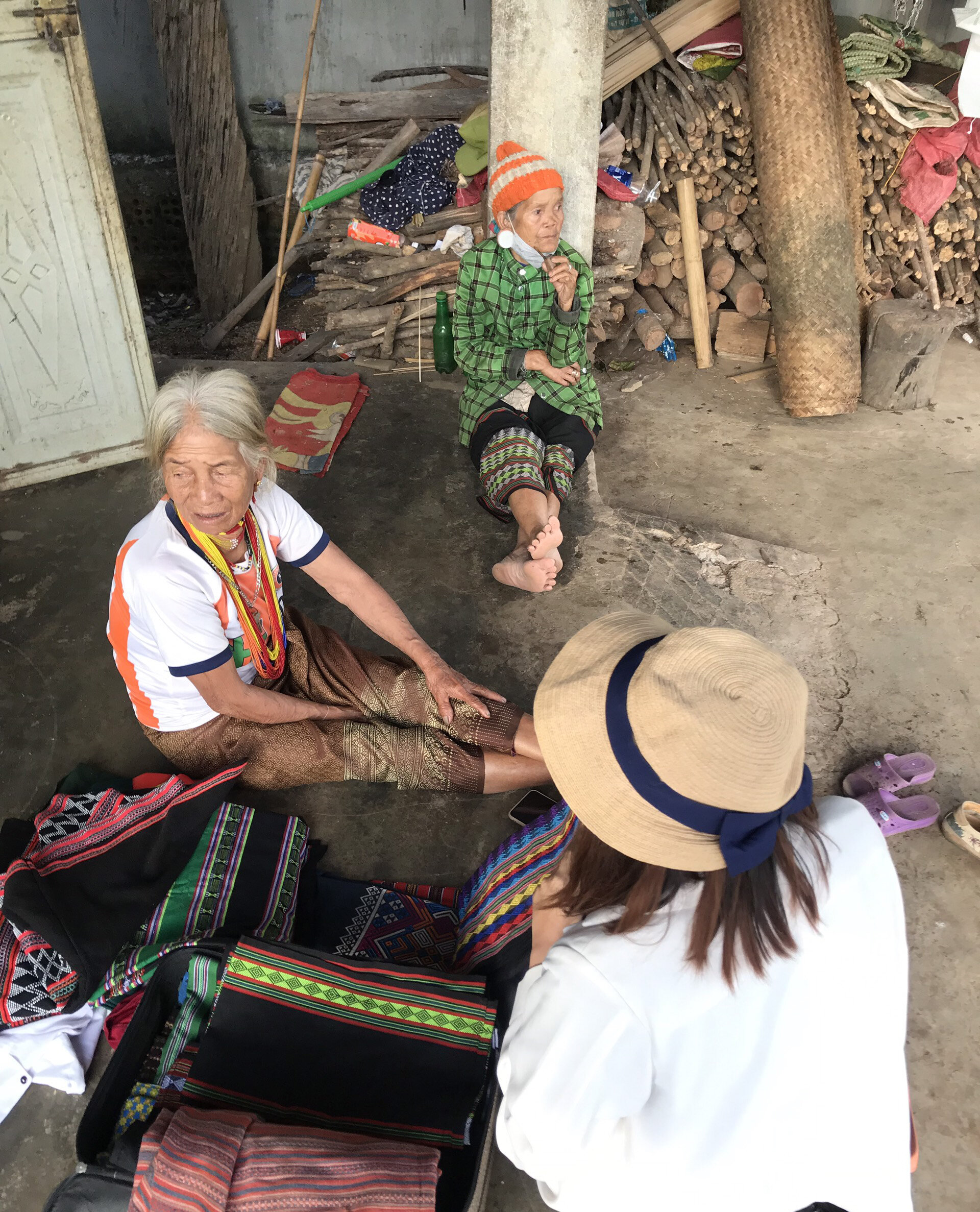
Each trip presents an opportunity for the members of Ethnicity to conduct thorough research, gather copious information and visuals to build up Ethnicity's digital library. This library boasts an impressive compilation of more than 200 illustrations of brocade patterns, which are categorized into four sections: conservation, development, application, and illustration libraries.
According to Thao Vy, a member of Ethnicity, the organization's e-library project not only serves as a repository for data about brocade patterns but also provides a means of integrating these traditional patterns into contemporary life, turning them into favorite creative inspirations of designers and artists worldwide. To this end, all illustrations on the platform are vectorized using modern software and are presented in both realistic and pixelated styles. Detailed descriptions about the spiritual and realistic meanings behind each pattern are also included.

Moreover, the development gallery offers modified versions of brocade patterns in color and lines, based on the advice of local artists, as well as application templates in the application library. Ethnicity believes that the variation and modernization of ethnic brocade patterns make traditional culture more accessible for use in modern design. “In terms of the Illustration library, although it has the most different content compared to the other three libraries, by providing the illustration of ethnic minorities' life, this library will help designers understand more about the context in which the local patterns are created, hence, using them more precisely in their products”, Vy continued to explain.
As Ethnicity members observe, due to the fact that there is no easy and accurate approach method, the brocade culture of Vietnam's ethnic minorities is gradually being overshadowed by other cultures, such as those of Japan, China, and America. They believe that, with their strengths in technology, creative thinking, and design ability, they can create a modern and engaging platform that will enable young people to easily learn about the artists' brocade patterns, and become more closely connected to the unique traditional culture of Vietnam.
But why are brocade patterns? Thao Vy, a member of the group, stated that initially, they were drawn to the aesthetic appeal of the colorful and striking patterns on brocade fabrics. However, as they delved deeper into their research, Ethnicity's members discovered that each brocade pattern is imbued with indigenous knowledge and values.
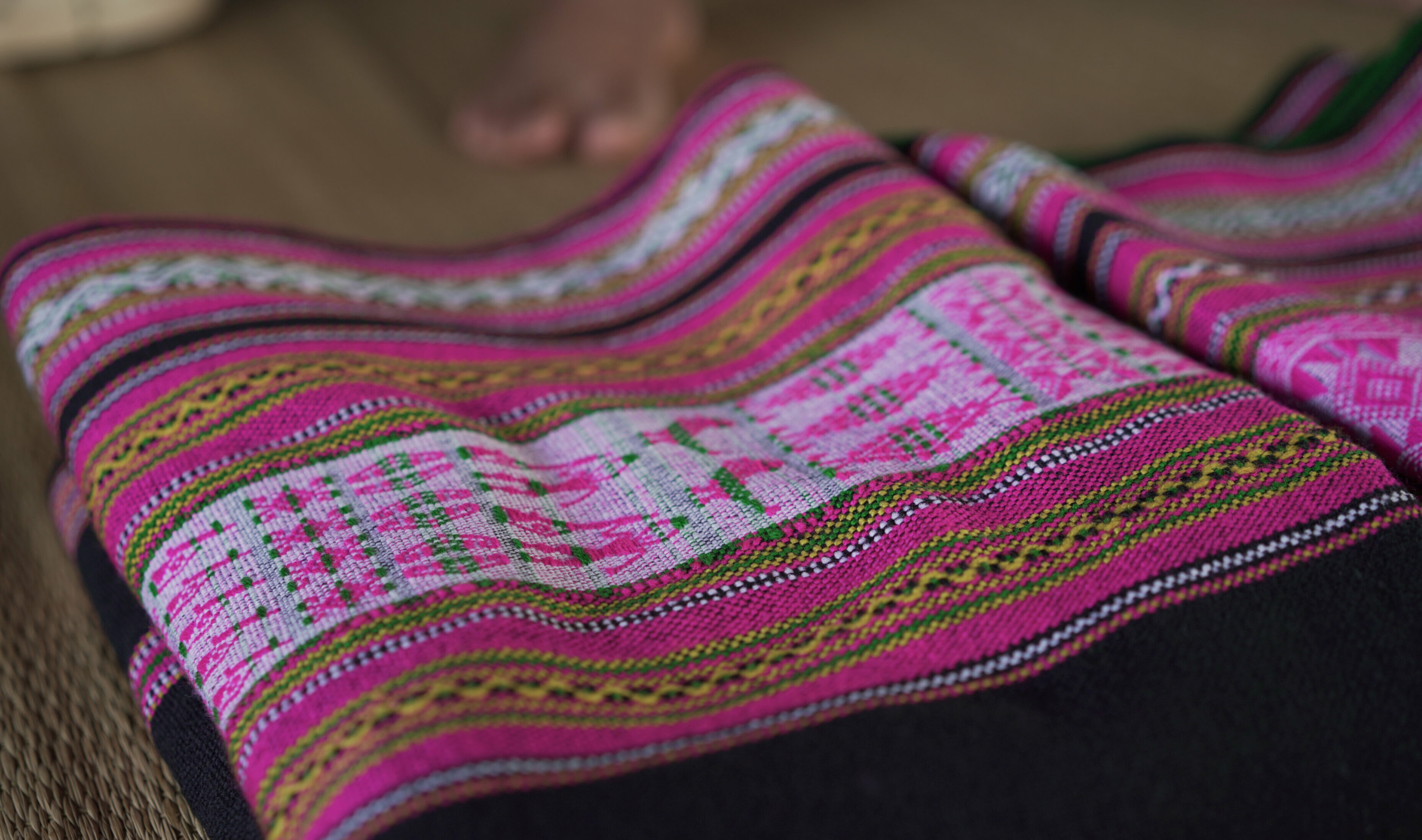
For Chenin, who is responsible for research, one of the steps in understanding a minority's brocade pattern is understanding their religious beliefs. Every ethnic group in Vietnam has its own distinct beliefs, customs, gods, and worldview, resulting in a variety of symbol systems and different interpretations of the patterns. The same pattern can have different meanings for different ethnic groups. For instance, the K'ho people view a pattern with four symmetrical golden streaks through the red dot in the middle as a depiction of the God of the Sun which means always keeping an optimistic spirit to find the light even when facing complete darkness in life. However, the Mường people see the same pattern as representing the hibiscus flower, which is often planted in front of the house to ward off evil spirits and bring good luck to the family.
Brocade patterns are not simply expressions of faith but are also unique books that record life stories and historical events associated with an artist's life. As Thao Vy explained, there was the image of war and peace, of enemy planes and heroic soldiers, of men and women, of familiar animals like chickens and ducks, living and dying in their beloved homeland. These patterns create special history books written in the language of distinctive brocade motifs.
One of the special things Ethnicity discovers from the brocade weavers of different ethnic groups is that they may not know how to write, draw, or even calculate; but they can still weave the saved images right away in their memory without drawing first. The method of weaving is difficult to explain and is more of an act of mere instinct. Years of practicing forms a specific ability that enables the artisan to simply know the threads' colors, quantity and positions needed to be used when they imagine weaving something. This is why you might see weavers who can quickly weave intricate patterns in their minds without needing to directly touch the loom - a truly remarkable ability unique to their craft.
"There are countless stories, thoughts, emotions and efforts poured into each embroidered pattern woven into the brocade fabric," explained Chenin, underscoring the artistry behind this traditional craft. "Some brocade products exist in just one version because the experience of weaving that fabric is a moment that the artist cannot recreate again exactly as it was before."
I had the opportunity to converse with Mr. A Lễ, a member of the Mơ Năm ethnic group, who is devoted to preserving his group's traditional culture by instructing and passing on their indigenous knowledge to the younger generation. The Mơ Năm ethnic group is classified as a branch of the Xơ Đăng ethnic group, well-known for the practice of weaving garments from tree bark-made cloth and sewing thread.
Mr. Lễ commented, "As society progresses, modern attire is increasingly prevalent due to its versatility and suitability for any weather conditions or circumstance. Therefore, only a few young individuals are keen on carrying on the tradition of making clothing from leaves and stems." This predicament is not unique to the Mo Nam ethnic group, but also experienced by many other ethnic groups in Vietnam.
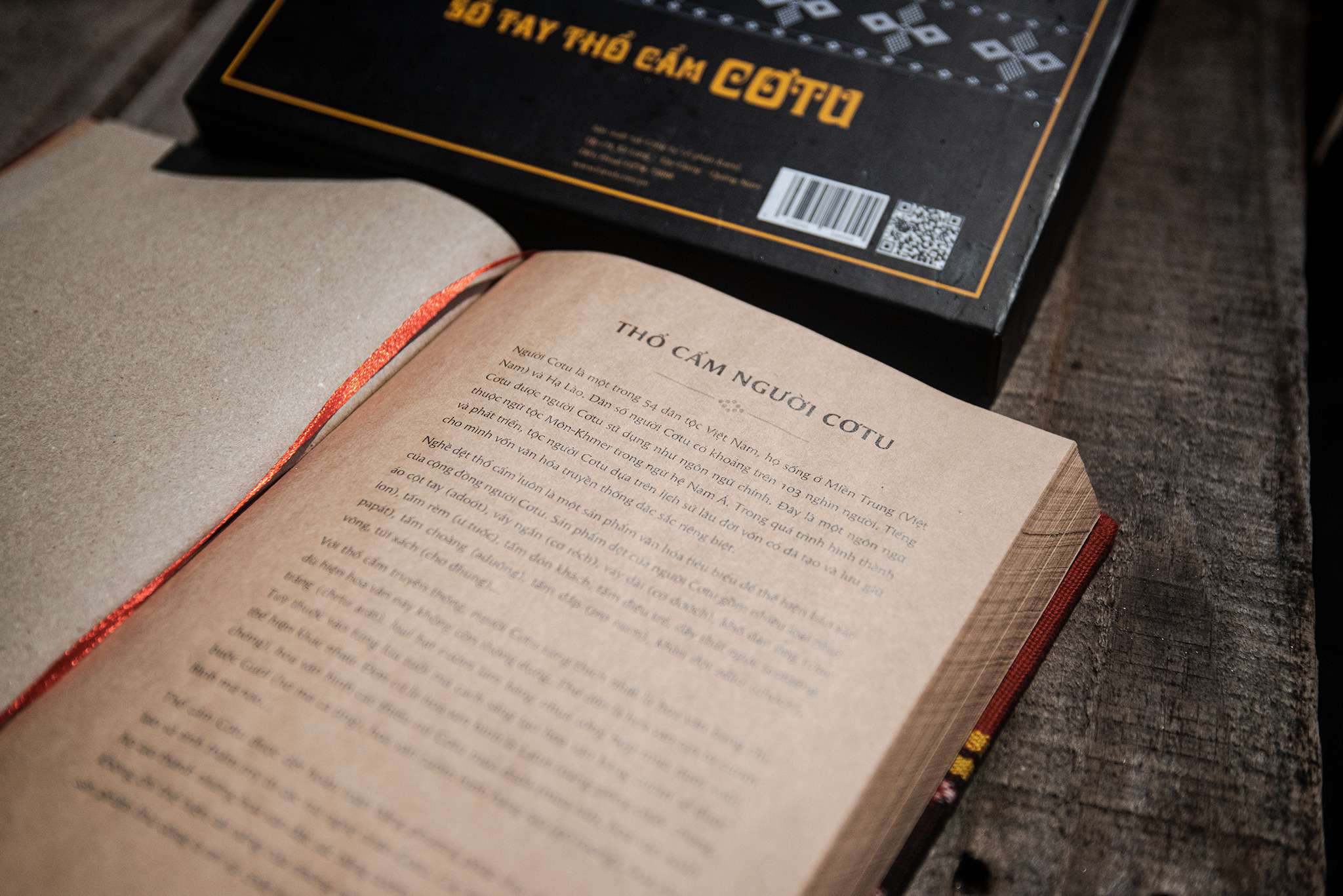
Chenin commented, "In reality, many people, including those from different ethnicities and foreigners, admire and wish to learn more about brocade culture. However, some ethnic minorities are unaware of the significance of their products. We always strive to assist ethnic minorities in being more self-assured in their brocade products while also supporting their promotion through imagery and communication, making the process of preserving and disseminating culture much simpler."
After each research excursion, Ethnicity produces several printed materials, for instance, handbooks and postcards for local ethnic minorities. These products are all decorated with brocade patterns and brief descriptions written in both Vietnamese and English. With these publications, tourists visiting the villages can gain a better understanding of the latent values behind each brocade product.
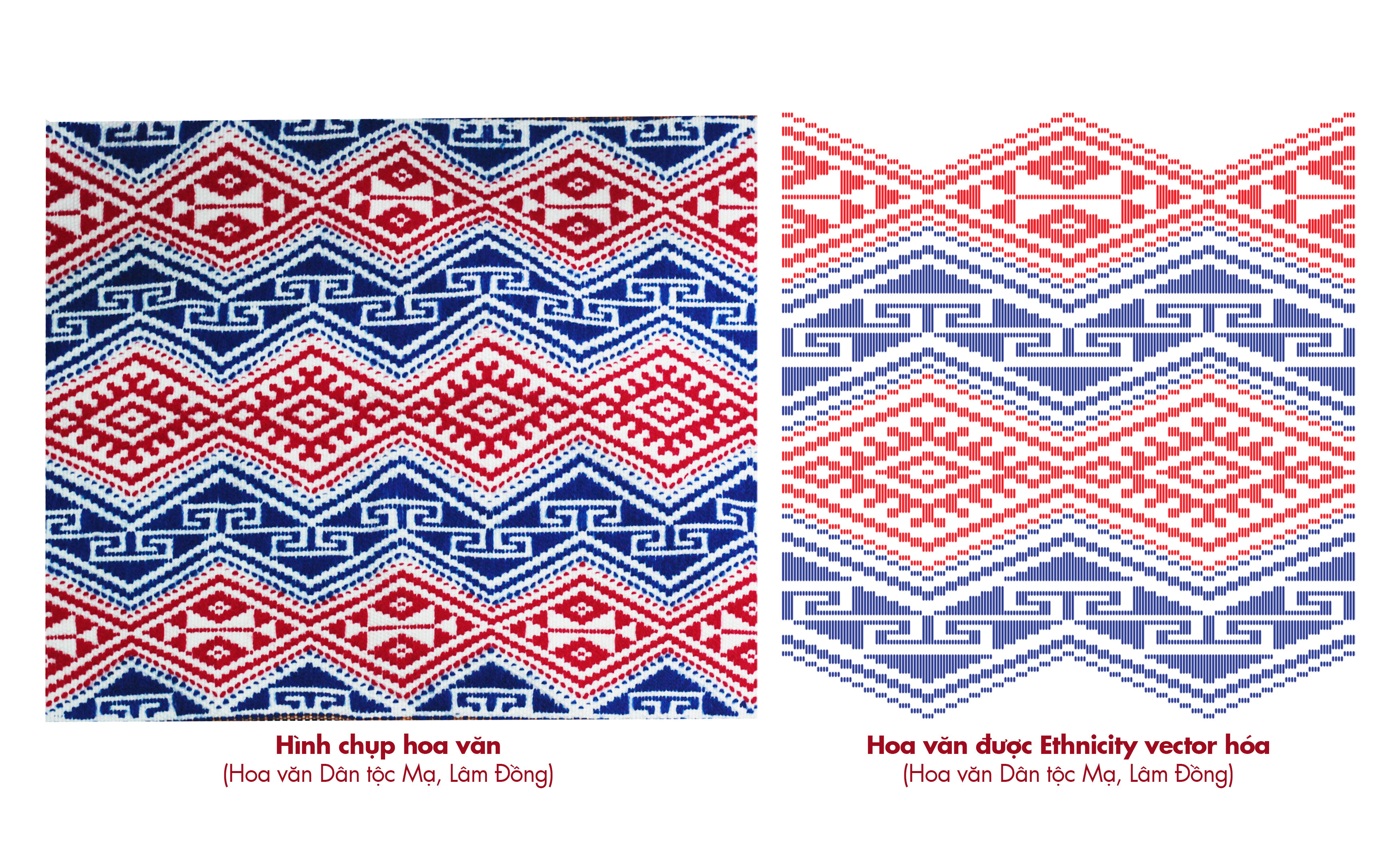
"Most of all, we understand that all conservation initiatives are pointless if the ethnic minorities themselves do not have the urge to safeguard their unique culture," Thảo Vy emphasized. Thus, Ethnicity's team regularly collaborates with other organizations to conduct workshops that provide knowledge and skills to assist ethnic minorities in promoting their brocade products. Moreover, with the assistance of available media resources, Ethnicity also aids in promoting and linking every organization involved in the conservation of ethnic minority brocade products.
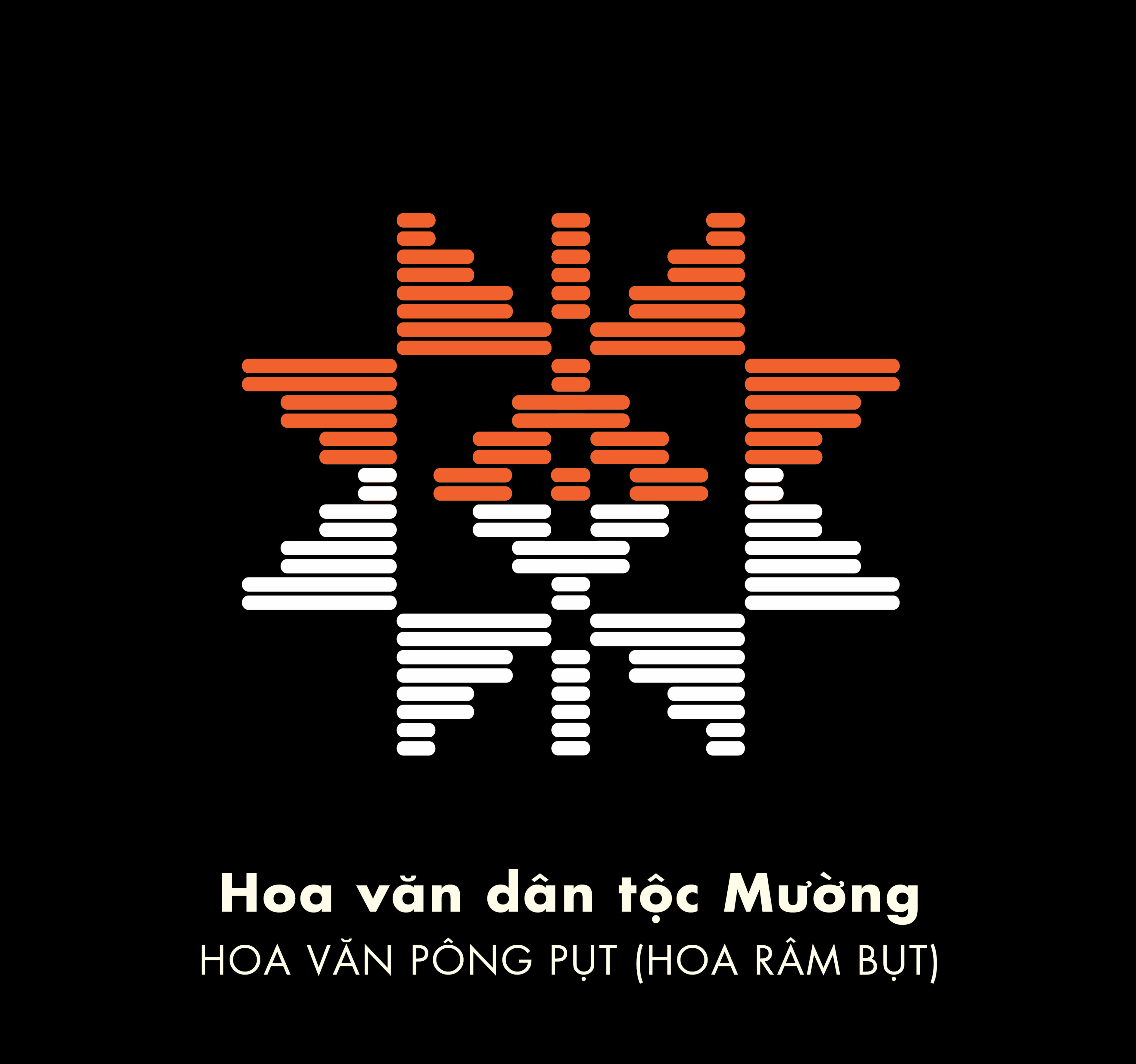
However, it is the passion and authentic fondness of Ethnicity's young members that have served as a significant motivation for many ethnic minorities to be prouder of their exceptional culture. Mr. Lễ recounted, "When they came to my village, we were elated. We are grateful that numerous young individuals are interested in learning about the Mo Nam ethnic group's culture and spending time with us to eat, drink, and converse until late at night. Their support has bolstered my confidence in preserving my people's brocade culture."
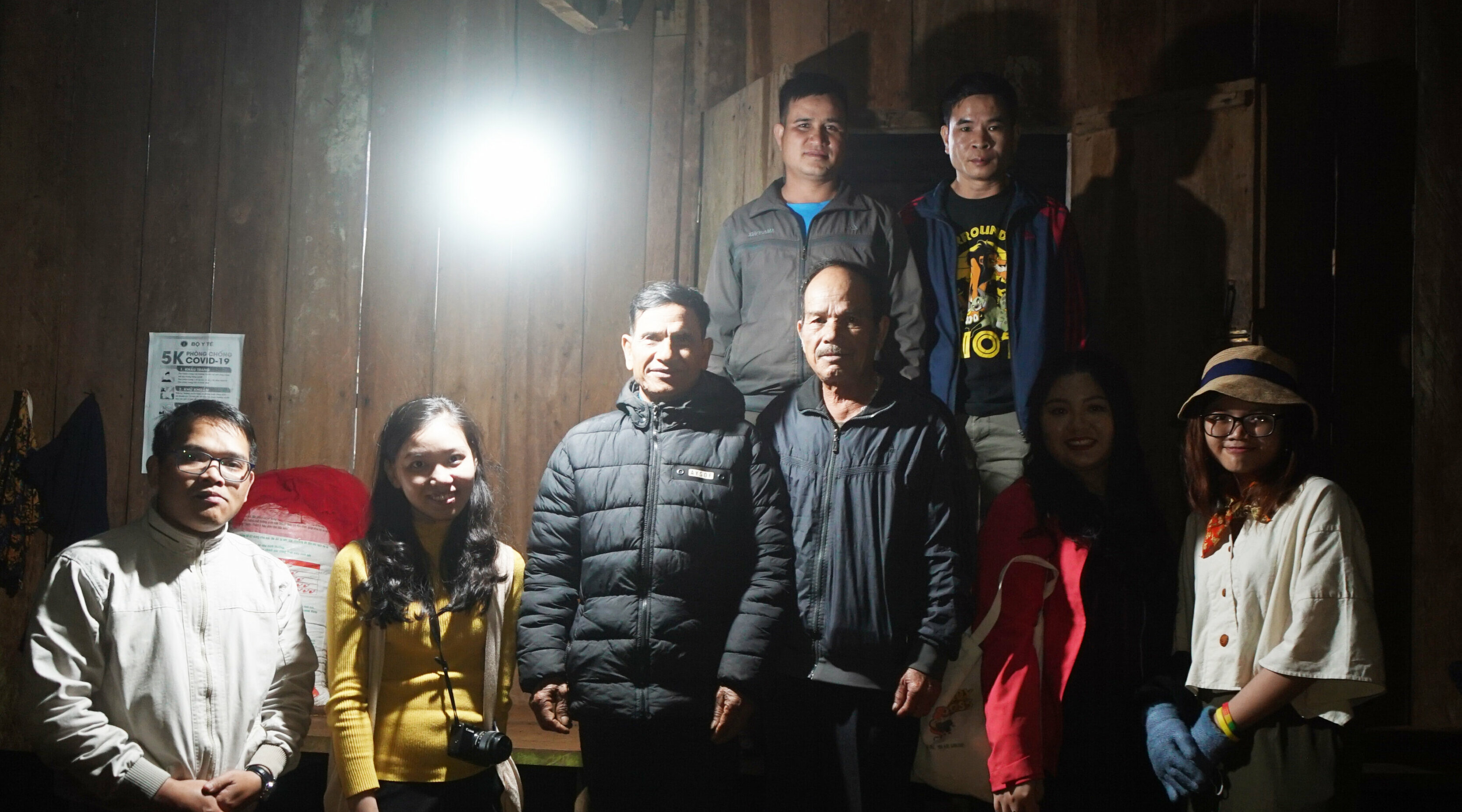
Link: COLORSxSTUDIOS
Writen by An Nguyen (COLORS team)
![[ETHNICITY x WECHOICE2023] A group of young people race against time to preserve each traditional pattern](https://firebasestorage.googleapis.com/v0/b/ethnicityviet-47a8d.appspot.com/o/2024%2F7%2F528069e9-983a-41f8-a6c9-d2006ed4cd06.jpg?alt=media&token=c257d08c-99af-422d-85fa-2d9ed948de43)
Created on 8/21/2024
With the art form of digitizing patterns woven on brocade, the Ethnicity Vietnam project is carried out by young people who are passionate about traditional ethnic culture and will bring the typical beauty of ethnic cultures get closer to the community.
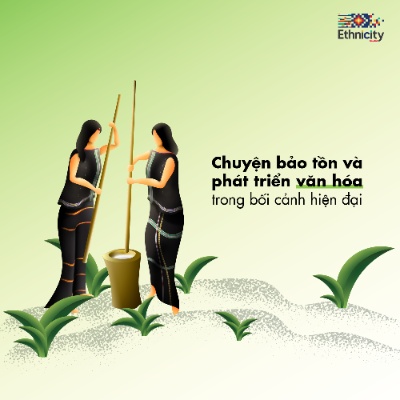
Created on 8/15/2024
This is the opening article of a series of academic articles created by Ethnicity with the desire to raise public awareness of major issues related to traditional and modern culture. At the same time, it is a space to discuss and cultivate understanding through research from international scholars. The project hopes to receive your support and response.